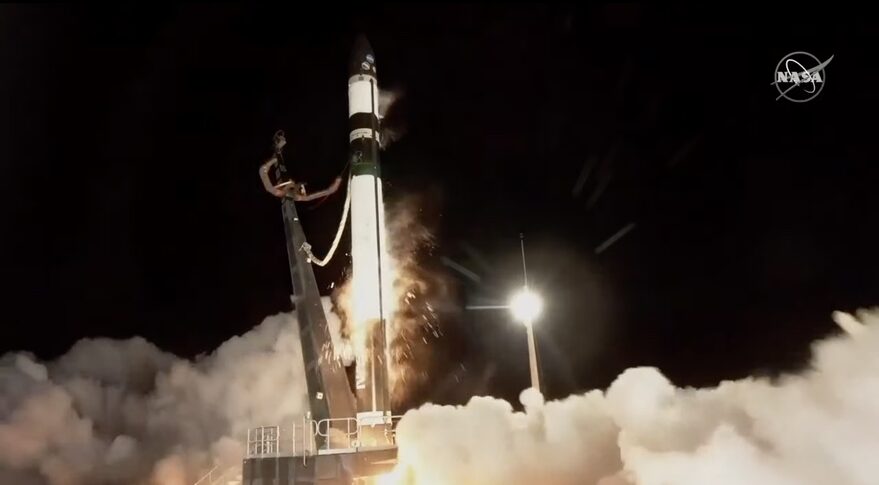WASHINGTON — An Electron rocket successfully launched a NASA-funded cubesat mission June 28 that will test the stability of the orbit around the moon the agency plans to use for future Artemis lunar missions.
The Electron rocket lifted off from Rocket Lab’s Launch Complex 1B in New Zealand at 5:55 a.m. Eastern. The Electron deployed the Photon kick stage nine minutes after launch, which then fired its HyperCurie engine twice over an hour to raise its orbit.
Photon will perform a series of burns over five days, gradually raising the apogee of its orbit. A final burn six days after launch will place the vehicle on a ballistic lunar trajectory. Photon will then deploy its payload, NASA’s Cislunar Autonomous Positioning System Technology Operations and Navigation Experiment (CAPSTONE) cubesat.
CAPSTONE will follow a low-energy trajectory to the moon, entering into a near-rectilinear halo orbit (NRHO) around the moon Nov. 13. That trajectory is designed to minimize the propulsion needed by CAPSTONE, a 12U cubesat weighing 25 kilograms, to go into orbit.
CAPSTONE is owned and operated by Advanced Space, a Colorado company that won a NASA contract in 2019 to develop the spacecraft to test the stability of the NRHO, which NASA plans to use for Artemis missions, including the lunar Gateway. That contract is valued at $19.98 million, said Christopher Baker, program executive for NASA’s Small Spacecraft Technology program, at a prelaunch briefing in May.
The spacecraft itself was built by Terran Orbital, with Stellar Exploration providing the propulsion system. NASA awarded a $9.95 million contract to Rocket Lab in 2020 for the launch.
Part of the CAPSTONE mission will be to better understand the NRHO ahead of Artemis missions, data agency officials say will be useful but not essential. “The data will be really helpful to refine models, maybe find efficiencies, but it’s not necessary or required to proceed,” said Nujoud Merancy, head of the exploration mission planning office at NASA’s Johnson Space Center (JSC), at the prelaunch briefing.
“CAPSTONE is already yielding benefits for the planning and development efforts for Gateway and Artemis,” said Brad Cheetham, chief executive of Advanced Space. “Our team is working day-to-day with the team at JSC.”
The other part of CAPSTONE will be a test of an autonomous navigation system, where CAPSTONE will send signals to NASA’s Lunar Reconnaissance Orbiter (LRO) to measure its position. “The CAPSTONE spacecraft will imitate a ground station and will send a ranging tone to the Lunar Reconnaissance Orbiter that LRO will turn around and send back to us,” Cheetham explained. “From that, the CAPSTONE spacecraft, using the CAPS software, will be able to estimate both spacecraft.”
For Rocket Lab, the CAPSTONE mission represented its heaviest payload to date, with the combination of CAPSTONE and Photon weighing 300 kilograms. It was also the first mission to use the HyperCurie engine, which uses hypergolic propellants and provides more than 3.2 kilometers per second of delta-V, or change in velocity.
“That was a tremendous amount of work,” Peter Beck, chief executive of Rocket Lab, said of HyperCurie at the prelaunch briefing. He said that the company is considering the same combination of Photon and cubesat for a planned private mission to Venus “and a bunch of other potential programs” that have high delta-V requirements.

